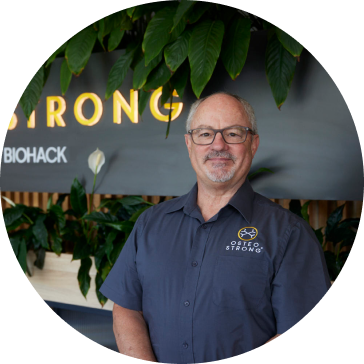Trees need wind to grow Strong
In Biosphere 2, an experiment to create an enclosed self-sustaining ecological system, it was observed that a tree grew taller, but eventually fell over, due to the absence of wind. This phenomenon highlighted the importance of stress, such as wind, in strengthening trees
Biosphere 2: Photos Show the 1990s Mars Colony Test As It Looks Today (businessinsider.com)
Trees strengthen in response to wind developing tougher trunks and deeper root systems to withstand environmental challenges.
They produce “reaction wood” to counteract the wind’s force: hardwoods generate “tension wood” on the upper side to pull themselves upright, while softwoods create “compression wood” on the lower side to push back to a vertical position.
This natural adaptation underscores the critical role that natural stressors play in the development and resilience of living organisms.
Bones also need Stress
Just like trees, our bones are also sculpted through various adaptive processes, helping us meet the mechanical challenges we face in everyday life and athletic pursuits.
Bone strength, crucial for our mobility and preventing fractures during falls or impacts, is greatly influenced by its structure and how it adapts to physical forces, mainly from muscle contractions and absorbing impacts.
We have known since the 1890’s that bones adapt to the stresses they regularly face, which can improve their strength and resilience. This is known today as Wolff’s Law. And just like trees, in the absence of regular stress force, bones can lose density and grow weaker.
This explains why astronauts, as well as master athletes such as cyclists and swimmers who subject their bones to less load, can develop weaker skeletons.
How OsteoStrong® Helps You Build Stronger Bones
Understanding how bones respond to different types of physical stress is vital for reducing fractures through prevention or targeted treatments.
During our younger years, high-impact activities such as running and jumping contribute to building a strong foundation for our bones, which is vital for our health in later life.
However, after about age 30, various factors lead to a decrease in bone formation and an increase in bone loss. This process speeds up during menopause and andropause, raising the risk of fractures as we age. With people living longer today, the consequences of bone deterioration over time become even more critical, highlighting the need for ongoing and effective bone health management strategies.
Research shows that only very heavy weightlifting and high-impact activities boost bone density and strength, similar to how strong winds strengthen trees. Regular exercises like walking, jogging, yoga, and gym workouts don’t apply adequate pressure needed to stimulate bone growth, which is above 4.2 times your body weight1.
But unfortunately, weightlifting and high impact activities aren’t suitable or safe for older adults, those not in shape, or those who have had previous fractures.
This is where OsteoStrong® steps in for people at almost any age and condition.
OsteoStrong offers a unique advantage by allowing individuals to exert significantly greater forces than typical exercises much more safely, leading to enhanced bone and muscle strengthening through the body’s adaptive response. The specialised Spectrum equipment places participants in an optimised biometric stance, where they are naturally 8 to 10 times stronger, thereby maximising the body’s capacity for growth and strength.
What can you do for your bone health today
Are you ready to build a stronger, healthier future for your bones? Discover the power of natural adaptation with OsteoStrong®. Visit us today to experience how our specialised Spectrum equipment can help you build your bone density, strength, and balance, ensuring you are fully prepared to face life’s challenges head-on.
Don’t wait for the effects of ageing to catch up: take control of your bone health today.
Join OsteoStrong today and stand strong against the winds of time!
- Kevin Deere et al. Habitual levels of high, but not moderate or low, impact activity are positively related to hip BPD and geometry: results from a population based study of adolescents, 2012, PubMed



